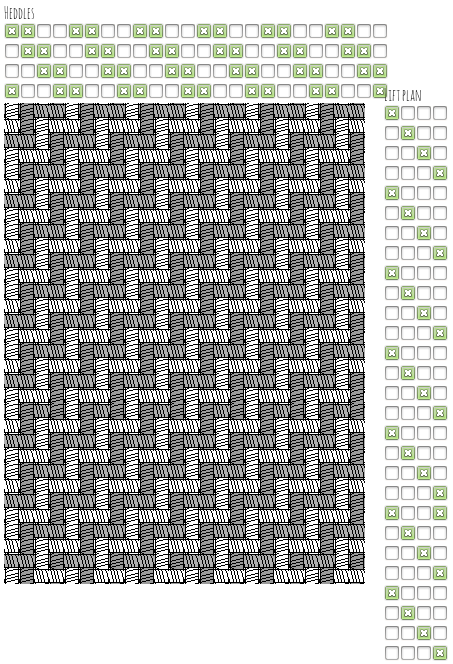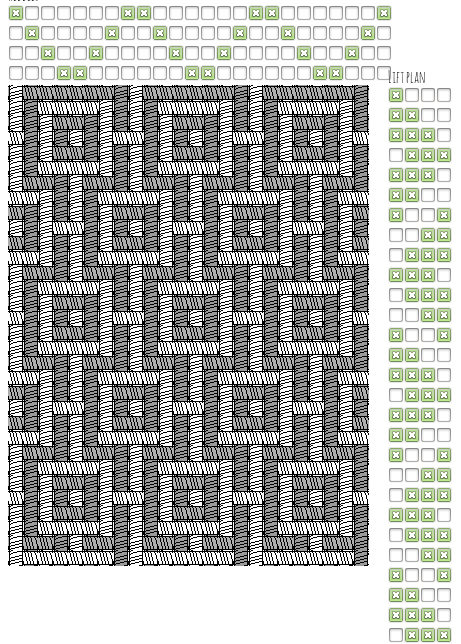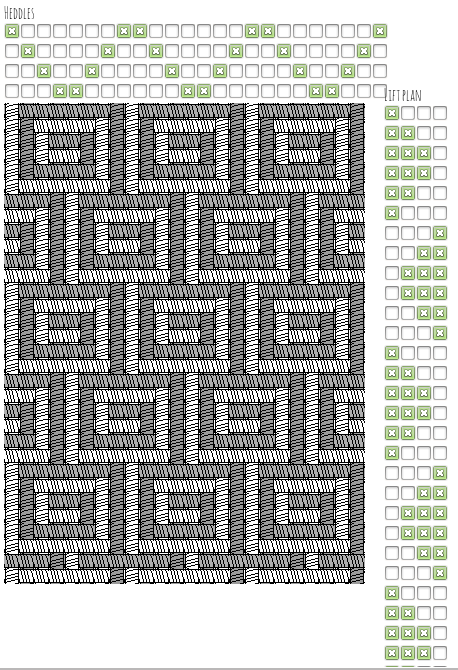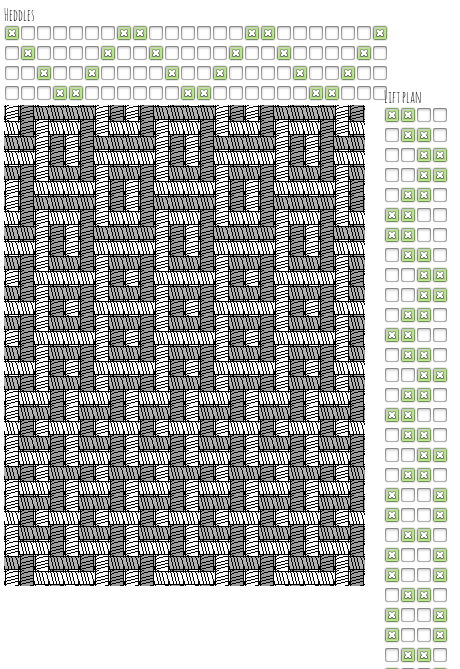On the train back from the Sheffield codingweaves workshops back in October I wrote a quick browser program to attempt to further understand the relationship between structure and pattern in weaving – which I’ve put online here. This works in the inverse of how we’ve been writing weaving simulation programs so far. Instead of defining the pattern you want directly, you are describing the set up of a 4 shaft loom – so the warp threads that each of 4 shafts pick up in the top row of toggle boxes, then which shafts are picked up for each weft thread as the fabric is woven on the right.
This involved writing a program that is based closely on how a loom functions – for example calculating a shed (the gap between ordered warp thread) by folding over each shaft in turn and or-ing each warp thread to calculate which ones are picked up. This really turns out to be the core of the algorithm – here’s a snippet:
;; 'or's two lists together: ;; (list-or (list 0 1 1 0) (list 0 0 1 1)) => ;; (list 0 1 1 1) (define (list-or a b) (map2 (lambda (a b) (if (or (not (zero? a)) (not (zero? b))) 1 0)) a b)) ;; calculate the shed, given a lift plan ;; position counter. ;; shed is 0/1 for each warp thread: up/down (define (loom-shed l lift-counter) (foldl (lambda (a b) (list-or a b)) (build-list (length (car (loom-heddles l))) (lambda (a) 0)) (loom-heddles-raised l lift-counter)))
I’ve become quite obsessed with this program, spending quite a lot of time with it trying to understand how the loom setup corresponds to the patterns. Here are some example weaves that you can try. Colour wise, in all these examples the order is fixed – both the warp and the weft alternate light/dark yarns.
This is tabby or plain weave – the simplest and strongest weave (used for sails and hard wearing fabric). The striped pattern is a result of this alternating colour order.
Basket weave – doubling the plain weave, results in a zigzag pattern.
This is called 2×2 twill, the structure provides a stretchy fabric, often used for clothes. Notice that the pattern in the same as the basket weave even though the structure is different – this is a hint at how structure and pattern are linked in strange ways (it gets much more complex than this of course).
I’ve become very interested in this threading pattern for the shafts as it results in lots of interesting patterns. This is an example of connected boxes.
A slight shift and we can obtain meanders, an important motif of the kairotic project. It turns out this is a highly unstable structure due to the length of the ‘floats’ – the threads spending too long without being incorporated back into the weave. More on that later on.
Here’s a more freeform weave where I switch patterns between different types by changing the lift order. Much like music, it’s possible to switch patterns in a nice way that doesn’t interrupt the flow.
Next up is building a real loom to try these patterns out in thread form.





